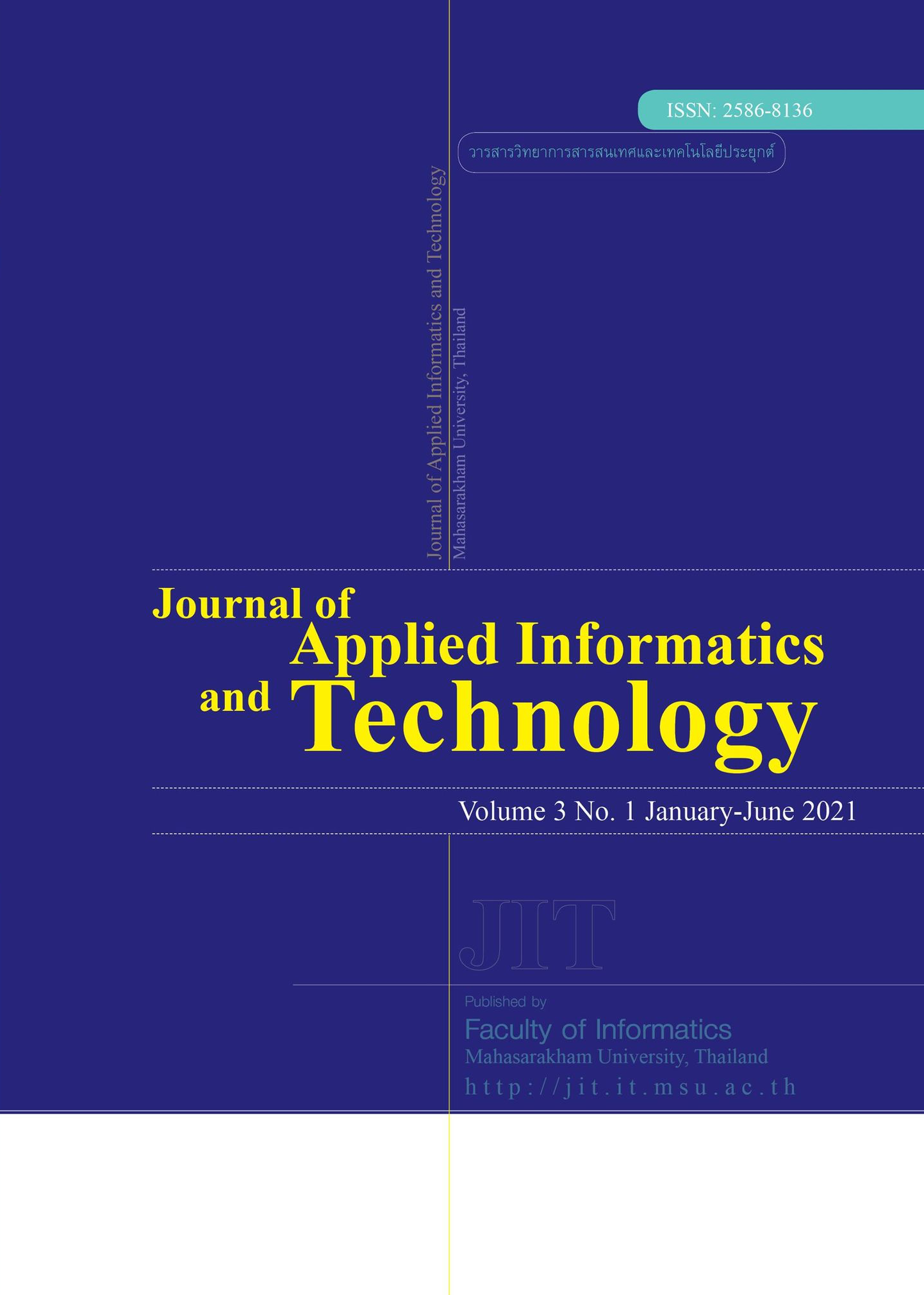The Development of Classroom Attendance System: Case Study Faculty of Informatics, Mahasarakhan University
Main Article Content
Abstract
Check the list of attendance performs the interaction between teachers and students. There are many additional benefits to the classroom, such as encouraging class members' attendance to the classroom, gaining the behavior score, and making class members know each other. It is helpful to check the list of members in the classroom. Although, it wastes time in teaching, especially checking the list of members in the large classroom, for example, general education courses and introductory courses of each department. Nowadays, many teachers still record their attendance on paper. These may cause delays while processing the attendance data, sometimes loss the attendance data and deterioration. It is also difficult for students to check their classroom attendance. In this research, we proposed using information technology to help teachers to check the list of students in the Faculty of Informatics, Mahasarakham University. The classroom attendance system could address the problems mentioned above. The proposed classroom attendance system was designed using responsive web technology. This system 1) allowed students to attend the classroom themself by using their smartphones and 2) allowed teachers to use the system to check the list of students. When teachers use the system to check classroom attendance, it benefits the students who do not have smartphones and have no internet connection on their smartphones. The proposed classroom attendance system could report the classroom attendance statistics in the numeric format and dashboard style. We then measure the satisfaction of users of the proposed classroom attendance system using a questionnaire. The satisfaction scale was measured at level 5. The results showed that The teachers' satisfaction with the system was at the highest level of satisfaction. The mean satisfaction value was 4.26 and a standard deviation value of 0.76. For the students, we found that the satisfaction level was very satisfactory. The average satisfaction value was 4.12, a standard deviation value of 0.79.
Article Details

This work is licensed under a Creative Commons Attribution-NonCommercial-NoDerivatives 4.0 International License.
All authors need to complete copyright transfer to Journal of Applied Informatics and Technology prior to publication. For more details click this link: https://ph01.tci-thaijo.org/index.php/jait/copyrightlicense
References
กานต์ ทิพยาไกรศร. (2561). การประยุกต์ใช้โปรแกรมสําเร็จรูป Plickers ในการเช็คชื่อ เพื่อปรับตัวเข้าสู่การเรียนการสอนในยุค 4.0 (วิชา นป 211 ความรู้พื้นฐานด้านนวัตกรรมทางการประมง). เอกสารวิจัยในชั้นเรียน มหาวิทยาลัยแม่โจ้. สืบค้น กันยายน 2561.
เกรียงศักดิ์ จันทีนอก และรัตนาวดี สนธิประสาท. (2560). ระบบเช็คชื่อออนไลน์. สืบค้น กุมภาพันธ์ 2564, สืบค้นจาก http://www.mse-exam.net/qr
ก่องกาญจน์ ดุลยไชย, อรรถวิท ชังคมานนท์ และอิทธิพงษ์ เขมะเพชร. (2560). ระบบตรวจสอบรายชื่อเข้าชั้นเรียนโดยอุปกรณ์อัจฉริยะ. วารสารวิชาการมหาวิทยาลัยฟาร์อีสเทอร์น. 11(พิเศษ), 125-133.
ฐิติกาญจน์ พันธ์การุ่ง. (2562). พัฒนาระบบสารสนเทศการลงเวลาเข้าเรียนของนักเรียนกรณีศึกษา โรงเรียนวัดบ้านหลวง (บัวราษฎร์บํารุง). [วิทยานิพนธ์ มหาวิทยาลัยศิลปากร].
ประทีป พืชทองหลาง, ญาตาวีมินทร์ พืชทองหลาง และอาภากร ปัญโญ. (2561). การสร้างระบบตรวจสอบการเข้าชั้นเรียนด้วย QR Code ในรายวิชาศึกษาทั่วไป. วารสารพุทธศาสตร์ศึกษา, 9(1), 11-26.
ปิยศักดิ์ ถีอาสนา และจารุกิตติ์ สายสิงห์. (2559). การพัฒนาระบบตรวจสอบรายชื่อผู้เรียนด้วยเทคโนโลยี Barcode scanning. รายงานการวิจัย มหาวิทยาลัยราชภัฏมหาสารคาม.
วริญทร เจนชัย, จิติมนต์ อั่งสกุล และธรา อั่งสกุล. (2555). ระบบบันทึกการเข้าชั้นเรียนผ่านบลูทูธ. วารสารเทคโนโลยีสุรนารี. 6(1), 37-55.
วัฒนพล ชุมเพชร, ภริณัฐ หนูขุน และคุณัชญ์ เตียวนะ. (2561). การพัฒนาระบบเช็คชื่อเพื่อการติดตามพฤติกรรมการเข้าเรียนของนักศึกษาแบบมีส่วนร่วมผ่านระบบออนไลน์. วารสารเทคโนโลยีภาคใต้. 11(1), 185-192.
ศิริชัย นามบุรี. (2560). โมดูลตรวจสอบรายชื่อเข้าชั้นเรียน (Attendance Module). สืบค้น มกราคม 2564, สืบค้นจาก http://sirichai.yru.ac.th/2013/09/blog-post.html
Ibanez, L. (2019). Jakob Nielsen’s 10 general principles for interaction design. สืบค้น กุมภาพันธ์ 2564 สืบค้นจาก https://lazaroibanez.com/user-experience-jakob-nielsens-10-general-principles-for-interaction-design-2593b0b53ddc






